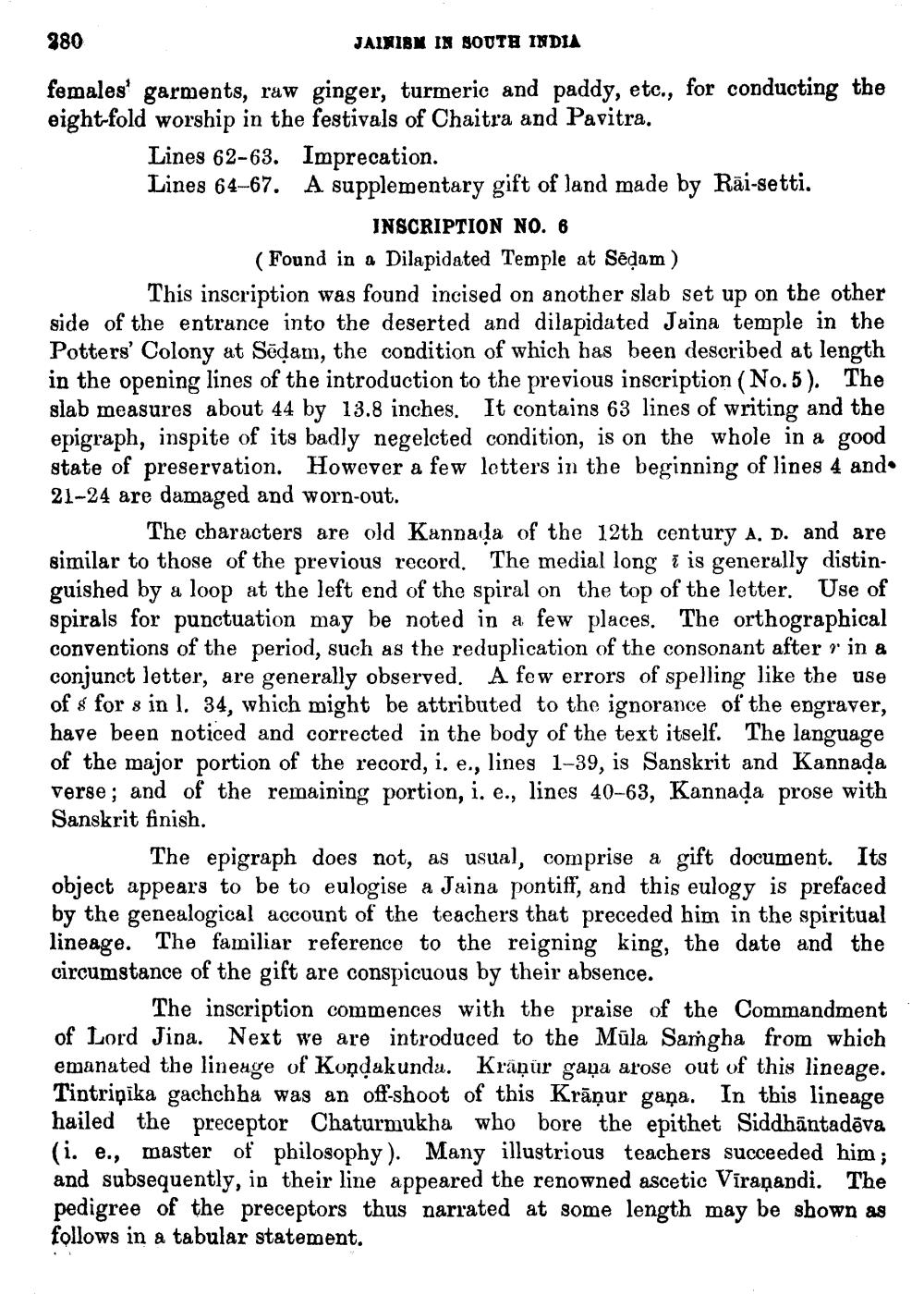________________
380
JAIXIBM IN SOUTH INDIA
females' garments, raw ginger, turmeric and paddy, etc., for conducting the eight-fold worship in the festivals of Chaitra and Pavitra.
Lines 62-63. Imprecation. Lines 64-67. A supplementary gift of land made by Rāi-setti.
INSCRIPTION NO. 6 (Found in a Dilapidated Temple at Sēdam ) This inscription was found incised on another slab set up on the other side of the entrance into the deserted and dilapidated Jaina temple in the Potters' Colony at Sēdam, the condition of which has been described at length in the opening lines of the introduction to the previous inscription (No.5). The slab measures about 44 by 13.8 inches. It contains 63 lines of writing and the epigraph, inspite of its badly negelcted condition, is on the whole in a good state of preservation. However a few letters in the beginning of lines 4 and. 21-24 are damaged and worn-out.
The characters are old Kannada of the 12th century A. D. and are similar to those of the previous record. The medial long i is generally distinguished by a loop at the left end of the spiral on the top of the letter. Use of spirals for punctuation may be noted in a few places. The orthographical conventions of the period, such as the reduplication of the consonant after in a conjunct letter, are generally observed. A few errors of spelling like the use of & for s in l. 34, which might be attributed to the ignorance of the engraver, have been noticed and corrected in the body of the text itself. The language of the major portion of the record, i. e., lines 1–39, is Sanskrit and Kannada verse; and of the remaining portion, i. e., lines 40-63, Kannada prose with Sanskrit finish.
The epigraph does not, as usual, comprise a gift document. Its object appears to be to eulogise a Jaina pontiff, and this eulogy is prefaced by the genealogical account of the teachers that preceded him in the spiritual lineage. The familiar reference to the reigning king, the date and the circumstance of the gift are conspicuous by their absence.
The inscription commences with the praise of the Commandment of Lord Jina. Next we are introduced to the Mula Samgha from which emanated the lineage of Kundakunda. Kraạür gana arose out of this lineage. Tintriņika gachchha was an off-shoot of this Krāņur gaņa. In this lineage hailed the preceptor Chaturmukha who bore the epithet Siddhāntadova (i. e., master of philosophy). Many illustrious teachers succeeded him; and subsequently, in their line appeared the renowned ascetic Viraņandi. The pedigree of the preceptors thus narrated at some length may be shown as follows in a tabular statement.




